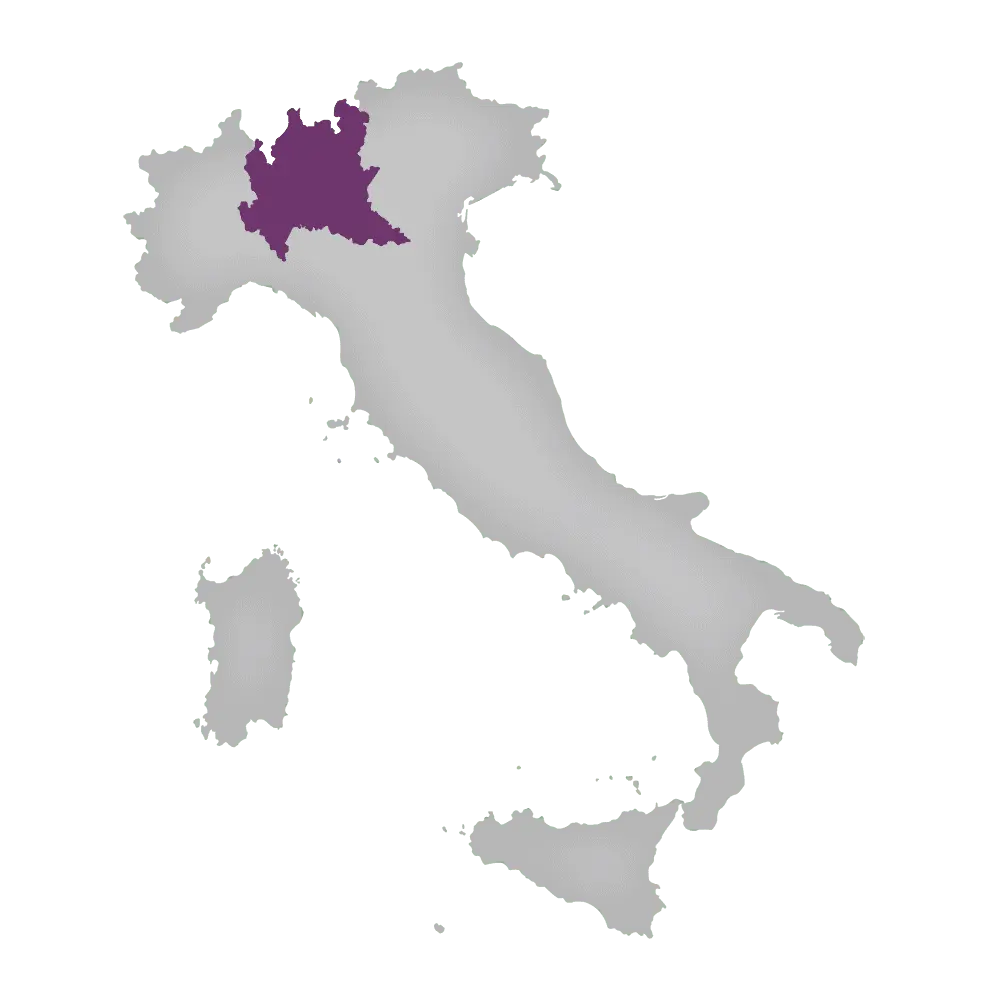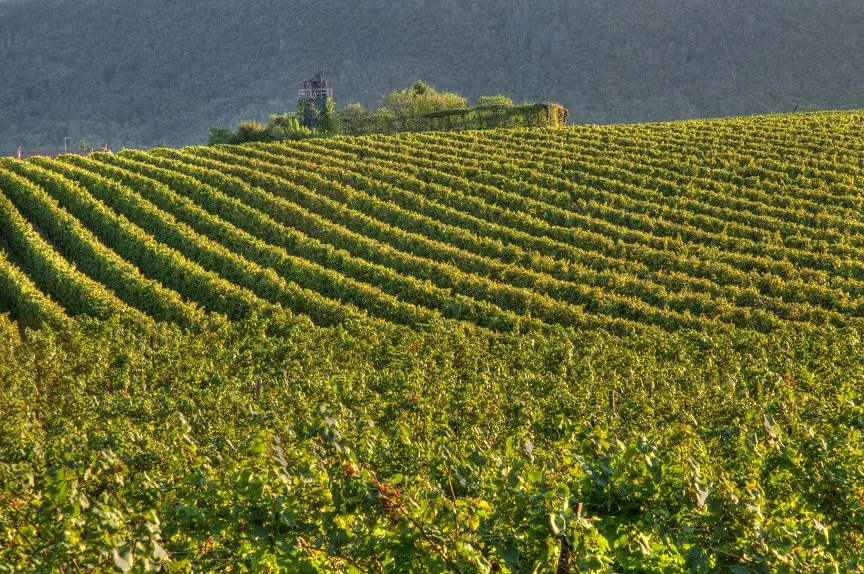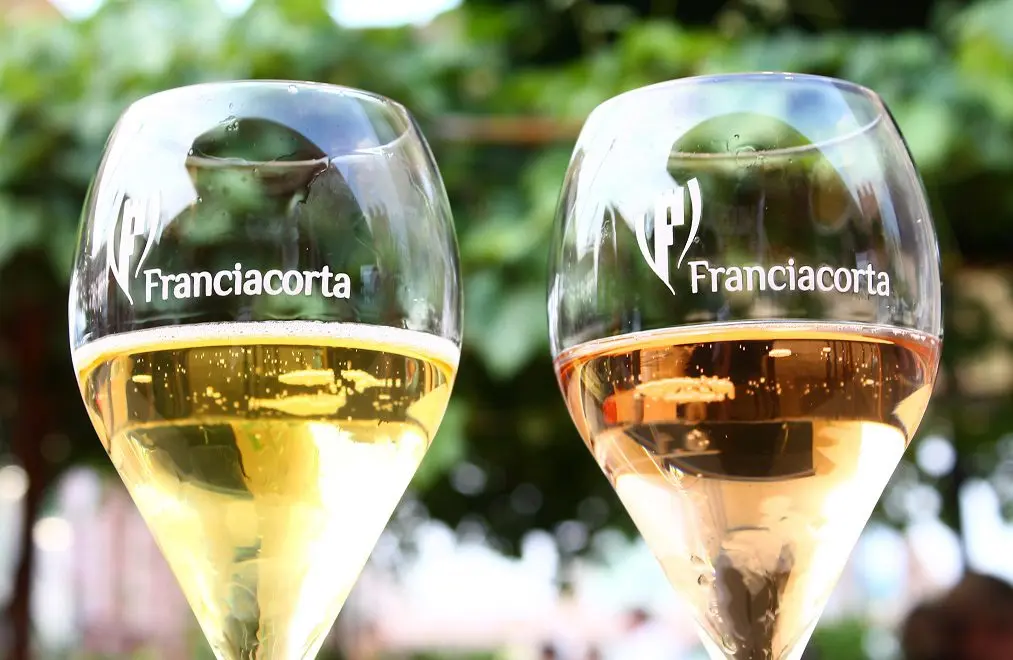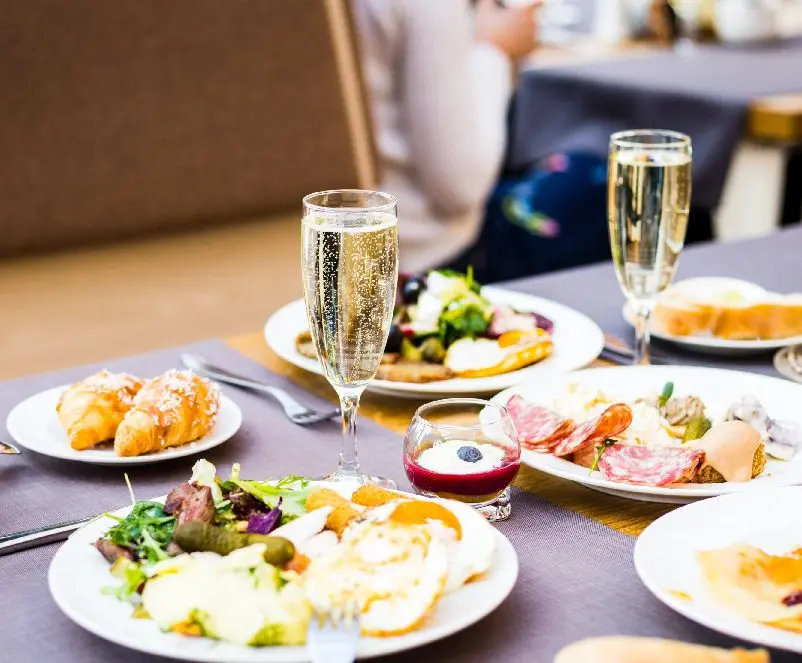Franciacorta is a sparkling wine from the province of Brescia in the wine region of Lombardy (Italy), which is carbonated using the classic champagne method. In 1967 it received the status of DOC, and in 1995 – DOCG.
History. According to Virgil and Pliny the Elder, the history of still wine production in this region goes back to antiquity. The first mention of Franciacorta wine appears in the city books of 1277, and in 1957 the winemaker Guido Berlucci launched the white wine Pinot di Franciacorta (Pinot di Franciacorta) on the market. Based on this product, one of the ambitious young oenologists working with Berlucci, Franco Ziliani, developed a sparkling version, which, however, retained the same name and appeared on the shelves in 1961.
Producers have concentrated on getting an excellent sparkling wine that is not inferior in quality to the famous champagne. For example, it is the winemakers of Brescia who have the honor of creating the first pink sparkling wine in Italy.

Franciacorta wine quickly became popular, and by 1967, when the drink received the status of a name controlled by origin, 11 winemakers had already specialized in its production, although 80% of the total output was still accounted for by the Berlucci enterprise.
Still wines are still produced in the region, but now they have a different name – Curtefranca (Courtefranca).
Production technology
In 1990, a technology regulatory body was established. According to the rules, franciacorta can be made exclusively by the classic method of re-fermentation in bottles (the same as French champagne), the yield from one site cannot exceed the established norms, and the Pinot Grigio variety was excluded from the blend.

Franciacorta is made from berries grown in the following communities: Adro, Capriolo, Cazzago San Martino, Cellatica, Coccaglio, Cologne, Corte Franca ( Corte Franca), Erbusco (Erbusco), Gussago (Gussago), Iseo (Iseo), Monticelli Brusati (Monticelli Brusati), Ome (Ome), Paderno Franciacorta (Paderno Franciacorta), Paratico (Paratico), Passirano (Passirano), Provaglio d’Iseo, Rodengo-Saiano, Rovato, Brescia. In these areas, the soil is rich in minerals, calcareous gravel and sandy moraine soils are found there. The traditional composition of the wine: 85% Chardonnay, 10% Pinot Nero, 5% Pinot Bianco.
According to the sugar content, Franciacorta is divided into the following types:
- Not dosed (до 2 г / л);
- Extra crude (2-6 г / l);
- Brut (franciacorta brut contains 6-15 g/l);
- Extra Dry (12-20 г/л);
- Sec (17-35 g / l);
- Demi-Sec (33-50 g/l).

Types
- Franciacorta NV (non-vintage wine). It is a blend of harvests of different years. It is released to the market at least 25 months after harvest and a year and a half of secondary fermentation in the bottle.
- Franciacorta Saten. The “whitest” version of the wine, in which it is forbidden to use red grape varieties, only Chardonnay and Pinot Bianco are allowed in a 50/50 ratio. The pressure in the bottle does not exceed 5 atmospheres, resulting in a delicate slightly carbonated wine, similar to French cremant. Aged in bottle for at least two years.
- Franciacorta Rose. At least 25% consists of Pinot Nero, secondary fermentation lasts from two years.
- Millesimato. Millesimal franciacorta, it is also vintage, at least 85% of the berries must belong to the same crop. It is released to the market at least 37 months after harvest and 30 months of secondary fermentation in the bottle.
- Riserva. The best wine of the line, aged in the bottle for at least 5 years.
How to drink franciacorta
In the bouquet of this wine, tones of roasted nuts, caramel, butter, red fruits, green apples, citruses are felt. Like any sparkling wine, franciacorta is served chilled to 8-10°C, although temperatures of around 12°C are acceptable for aged versions. Drink before, after, and during meals, this sparkling wine is combined with almost any dish – especially Italian cuisine. Dry versions are served with meat, fish, pastas, semi-sweet – with desserts, fruits, nuts.

Известные марки: Monte Rossa, Fratelli Berlucchi, Castle of Gussago La Santissima, Corteaura, Bellavista, Majolini, Ca ‘del Bosco, Enrico Gatti и др.









